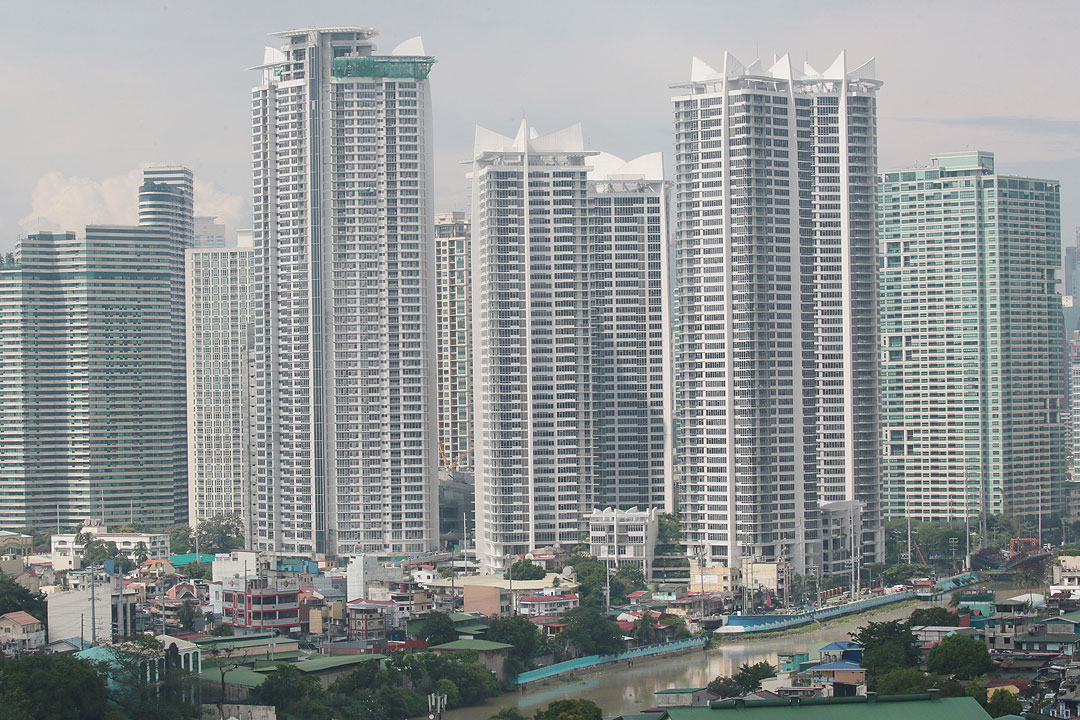
— PHILIPPINE STAR/MICHAEL VARCAS
THE vacancy rate for residential property in Metro Manila will likely hit 26% by the end of this year, with condominium developers reining in their launches to dispose of inventory, according to property consultant Colliers Philippines.
If realized, this would exceed the 24.3% overall vacancy in Metro Manila in the first quarter, according to the Colliers First Quarter Property Market Report.
“Essentially, one out of four condo units in the secondary market in Metro Manila is vacant,” Joey Roi H. Bondoc, director and head of research at Colliers Philippines, said in briefing on Tuesday.
The ban on Philippine Offshore Gaming Operators (POGOs) last year has left a void in the residential market, particularly in the so-called Bay Area district, Mr. Bondoc said.
The Manila Bay neighborhood is projected to have the highest vacancy rate by year’s end of 56.5%, against 14.3% in 2016, when POGOs started to pick up momentum.
Colliers projects that 5,800 units will be completed annually on average between 2025 and 2027, against the average of 13,000 units between 2017 and 2019.
In 2025, about 8,600 units will be completed in Metro Manila. This is expected to decline to 6,200 in 2026 and 2,500 in 2027.
Most of these condos started construction between 2019 to 2021, and are only due to be completed by 2025 or 2026, Mr. Bondoc said.
“Developers are not ramping up completion right now. Unlike before, where they would even expedite four years of completion, because they wanted to take advantage of the POGOs,” Mr. Bondoc said after the briefing.
Metro Manila had a total condominium inventory — both in ready-for-occupancy and in pre-selling — of 706,000 units as of the first quarter.
Southern Quezon City posted inventory of 7,000 units, followed by the Alabang-Las Piñas area (6,000 units), Pasig City (5,000 units), Makati fringe (4,000 units), Bay Area (4,000), and the northern Quezon City (4,000 units).
Ortigas Center had about 2,000 unsold units, while the Makati CBD and Fort Bonifacio each had inventory of 1,000 units.
Mr. Bondoc also noted that the government’s proposal to increase capital gains tax might impede real estate transactions.
“If you are a seller and you want to factor in the entire capital gains tax, you’re likely to sell your property at a much higher price. And that will result in slower real estate transactions, thereby hampering the affordability of properties especially in the secondary market,” he told the briefing.
In the office segment, the Metro Manila market saw a quarter-on-quarter rebound in transactions by floor area at 238,000 square meters (sq.m.), against 143,000 sq.m. in the fourth quarter of 2024.
As of the first quarter, Colliers estimated net takeup of 77,000 sq.m. in office space. Demand was driven by expansion particularly in Quezon City, Makati and Ortigas CBDs, the Bay Area, and Fort Bonifacio.
On the other hand, relocations accounted for 1,000 sq.m. of demand, mainly in Alabang and the Makati and Ortigas fringes.
Metro Manila office vacancies are projected at 22% this year. It expects about 612,000 sq.m. of new office supply by the end of the year. — Beatriz Marie D. Cruz